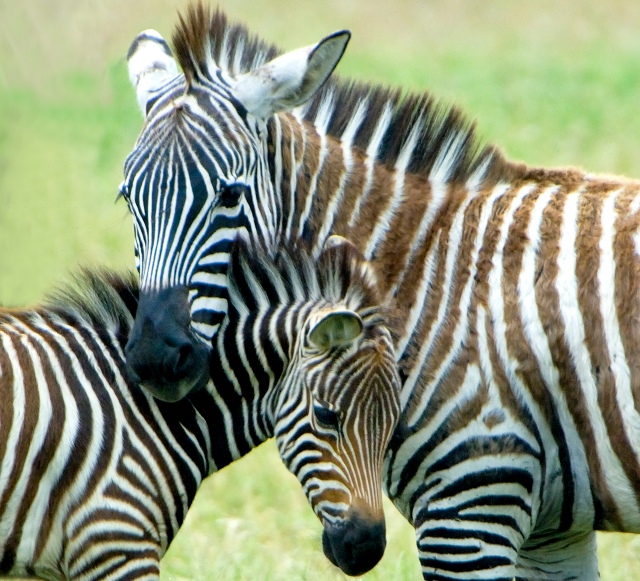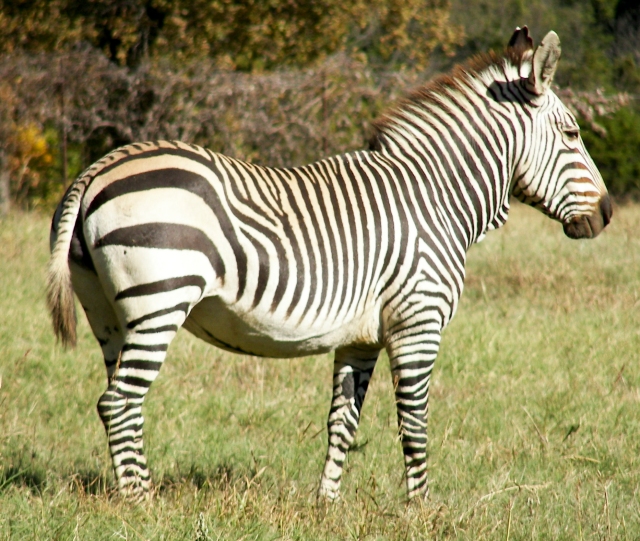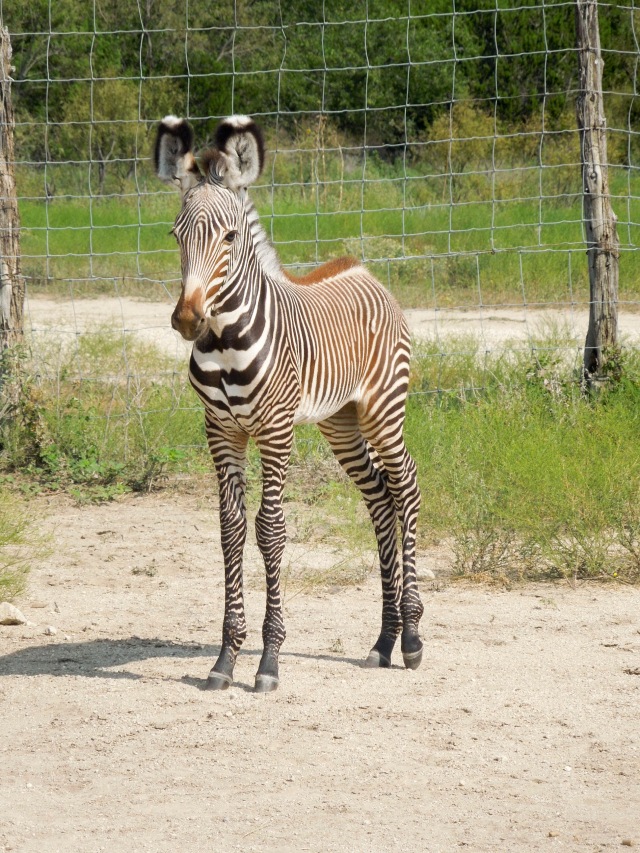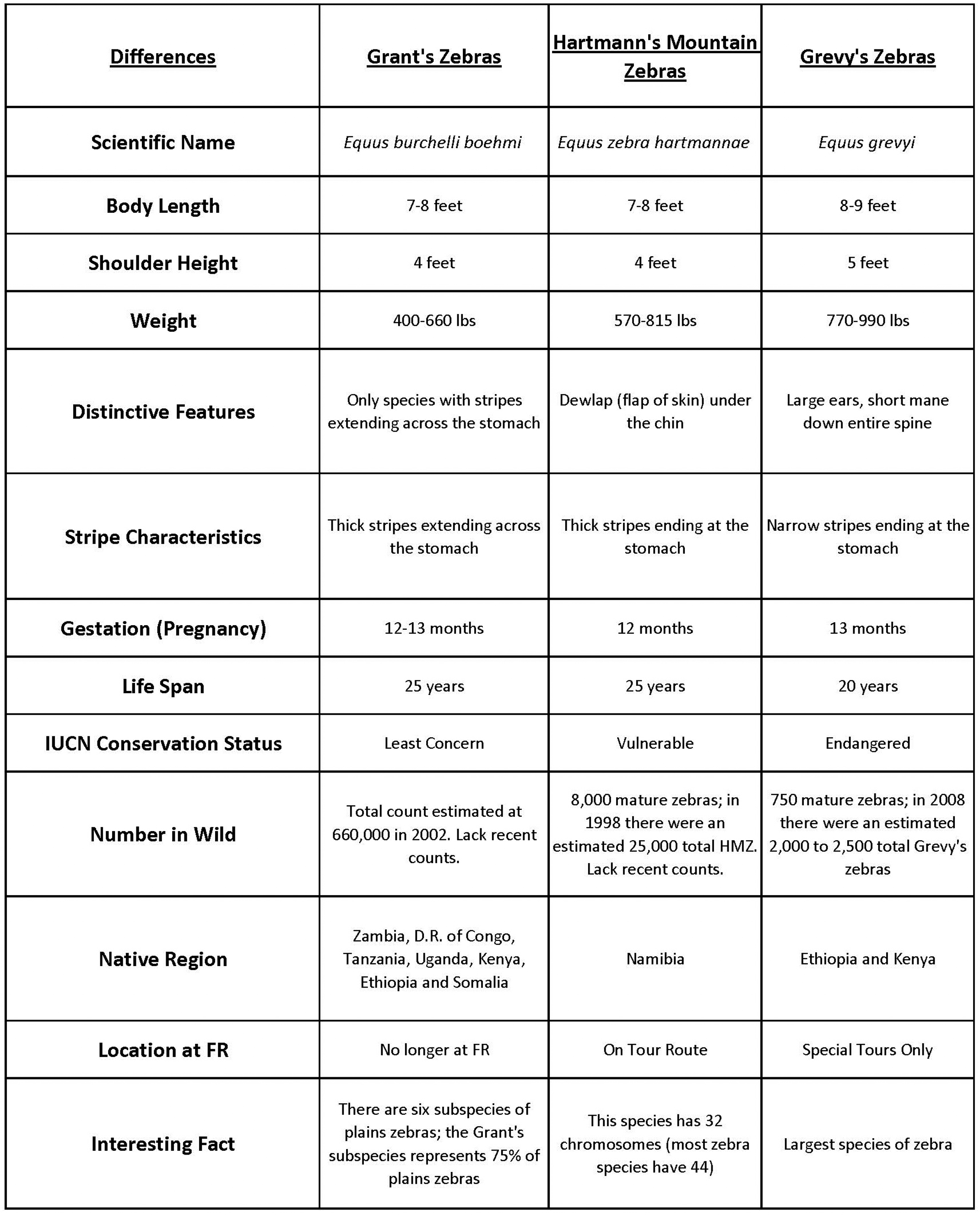One of our visitors’ favorite animals is the zebra, but did you know that there are actually three species of zebras? Fossil Rim has been home to all three species during its history, and we currently have Hartmann’s mountain zebras and Grevy’s zebras.
From 1986 to 2011, Fossil Rim had a breeding herd of Grant’s zebras, a subspecies of the plains zebra.

This is considered a species of least concern*, with over 400 in managed populations within AZA (Association of Zoos and Aquariums) facilities. If you see a zebra at a zoo, it is very likely a Grant’s zebra. This species is common throughout several nations in southern and eastern Africa (especially Kenya and Tanzania) and overall the population is stable. There are no major threats to the population as a whole although certain parts of the zebra’s range are subject to habitat loss and overhunting.



As a conservation center, we try to direct our attention to housing and breeding vulnerable and endangered species. In 2007, Fossil Rim acquired a herd of Hartmann’s mountain zebras, which are considered vulnerable*. Hartmann’s mountain zebras are native to Namibia, and they are threatened by hunting and competition with domestic livestock for access to water. There is limited information on population size, but it is estimated to be around 8,000 mature zebras. Fossil Rim is one of the few facilities in the United States to house this species.


In 2011, Fossil Rim made the decision to increase our focus on breeding Hartmann’s mountain zebras. In the past we had housed both Grant’s zebras and Hartmann’s mountain zebras in two different pastures on the tour route, but we decided that since the Grant’s zebras were well represented in zoos, Fossil Rim would be making a greater contribution to conservation by focusing on the Hartmann’s mountain zebras. We de-acquisitioned the Grant’s zebra herd to other facilities and moved our Hartmann’s mountain zebras from the Front Pasture to the Game Preserve. In addition to being larger than the Front Pasture, the Game Preserve also has more hills and mountainous terrain that better mimic the zebras’ native range. In 2013, we had our first set of Hartmann’s mountain zebra foals born since moving them to the Game Preserve.



In 1982, Tom Mantzel (the founder of Fossil Rim) brought Grevy’s zebras to Fossil Rim in his first effort to breed an endangered species. Fossil Rim became the first ranch to participate in a Species Survival Plan (SSP) of the AZA, and success with Grevy’s zebras led to Fossil Rim’s involvement with other endangered species.



Grevy’s zebras are in great need of conservation help, and Fossil Rim is actively seeking to breed this species. According to the IUCN Red List, the population of Grevy’s zebras has “declined by more than 50% over the past 18 years” and there are currently estimated to be 750 mature Grevy’s zebras in the wild (Moehlman, Rubenstein & Kebede, 2013). They live in Ethiopia and Kenya; however, they face threats due to habitat loss and competition with domestic livestock for water and grazing area. The extraction of water for irrigation systems has also reduced the availability of water for the zebras during the dry season. Additionally, the zebras are hunted in parts of their range.


If you drive through Fossil Rim on the tour route, the Hartmann’s mountain zebras are the species you may see. Please remember that zebras will bite, so do not feed them by hand.

Due to their need for rocky terrain and the fact that they don’t get along well with some other species at Fossil Rim, the Grevy’s zebras are housed in a behind-the-scenes location. Although Grevy’s zebras are not on the usual tour route, they can sometimes be seen while on an Adventure Tour.

It takes some practice to tell the three species of zebras apart from one another. This chart will help explain the differences:


By: Kristen Culp (Documents Administrator)
*Conservation status listings are from www. iucnredlist.org
Moehlman, P.D., Rubenstein, D.I. & Kebede, F. 2013. Equus grevyi. In: IUCN 2013. IUCN Red List of Threatened Species. Version 2013.1. . Downloaded on 27 August 2013.
